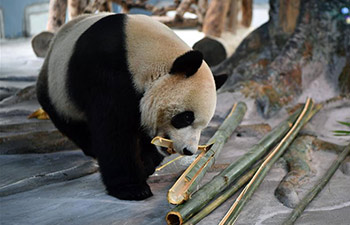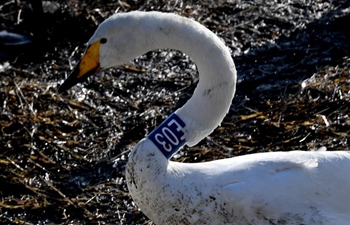WUHAN, Nov. 26 (Xinhua) -- Chinese scientists say they have a breakthrough in identifying plant diseases that are frustrating attempts by farmers to grow kiwifruit to meet the huge domestic and global demand.
Researchers at Wuhan Botanical Garden under the Chinese Academy of Sciences have recently identified three key funguses that can kill fruit, destroy flavor and reduce production.
Since last year, they have studied kiwifruit in Guizhou, Zhejiang and Yunnan provinces, where planting is on a larger scale and diseases are reported more frequently than other areas.
Research leader Li Li said most orchards in southwest China's Guizhou are at high altitudes, where local fruit has a higher sugar accumulation due to the large temperature difference between day and night. The sweetness makes fruit more vulnerable to pests and diseases.
Neighboring province Yunnan has high temperatures in winter and coastal province Zhejiang is rich in rainfall, so epidemics are hard to prevent and control.
Researchers found that Nigrospora sphaerica, a fungus causing post-harvest rot, can make the kiwifruit skin softer and flesh soggier. Rotten fruit smells very sour or fermented. It is the most severe fungal disease in Chinese kiwifruit orchards. The incidence in many provinces such as Sichuan, Shaanxi, and Hunan is 20 to 50 percent.
Healthy kiwifruit can be stored for four to eight months at low temperatures, but fruit infected with such disease can last only six to 10 days.
Previous studies showed the fungus can also attack apples and pears, said Li.
The other two newfound funguses, Alternaria tenuissima and Didymella glomerata, cause diseases in leaves and fruit, which speeds up rot and cuts production.
The study, published in the international journal Plant Disease, could help develop new fungicides.
China is the world's largest kiwifruit grower and exporter. The nutrient-rich fruit is native to China and was taken across the Pacific to New Zealand in 1904. Many people thought the fruit had a gooseberry flavor, naming it "Chinese gooseberry".
The economic impact of the three fungi has not been released, but kiwifruit from the three provinces have not been exported.

















